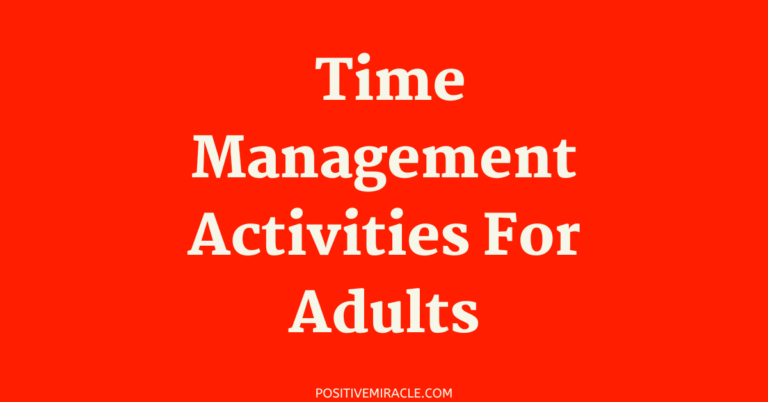Maximize Your Time with Stephen Covey 4 Quadrants

“The key is not to prioritize what’s on your schedule, but to schedule your priorities.” – Stephen Covey
Welcome to the world of effective time management. In today’s fast-paced and demanding world, finding the right balance between professional and personal commitments can be challenging. But what if there was a way to maximize your time and achieve your goals with greater ease? Enter Stephen Covey’s 4 Quadrants of Time Management.
Stephen Covey, renowned author, educator, and leadership expert, introduced the Time Management Matrix as a powerful tool for improved productivity and efficiency. This matrix helps individuals identify tasks based on their urgency and importance, empowering them to prioritize effectively and make the most of their time.
Now, let’s dive deep into each quadrant of Covey’s Time Management Matrix and explore how it can transform your approach to time management. Get ready to reclaim control over your schedule, boost productivity, and achieve your goals like never before.
Key Takeaways:
- The Time Management Matrix, popularized by Stephen Covey, offers a game-changing approach to time management.
- Stephen Covey’s 4 Quadrants help individuals prioritize tasks based on their urgency and importance.
- By scheduling priorities instead of prioritizing what’s on your schedule, you can achieve greater efficiency and effectiveness.
- Understanding and leveraging the Time Management Matrix can lead to improved productivity and goal attainment.
- Stay tuned as we explore each quadrant in detail and provide practical tips for optimizing your time.
The Time Management Matrix: An Overview
The Time Management Matrix, also known as the Covey Time Management Matrix, is a widely used productivity tool that organizes tasks based on their urgency and importance. It provides a strategic framework for effective time management and helps individuals prioritize their tasks to maximize productivity and achieve their goals.
Quadrant 1: Urgent and Important
This quadrant includes tasks that are both urgent and important. These tasks require immediate attention and often relate to critical deadlines, emergencies, or crisis management. Examples include dealing with pressing work-related issues, handling time-sensitive projects, or addressing urgent personal matters.
Quadrant 2: Not Urgent yet Important
Quadrant 2 consists of tasks that are not urgent but are important. These tasks are future-oriented and contribute to long-term success and personal growth. Prioritizing tasks in this quadrant allows you to focus on activities such as planning, goal setting, relationship building, skill development, and proactive problem-solving. Investing time in Quadrant 2 helps prevent crises and increases productivity in the long run.
Quadrant 3: Urgent but Not Important
In this quadrant, tasks are urgent but not important. They demand immediate attention but have little relevance to your long-term goals. Examples include unnecessary meetings, unsolicited requests, unimportant emails, and interruptions from others. Spending too much time in this quadrant can lead to distractions and hinder progress on more significant tasks.
Quadrant 4: Not Urgent and Not Important
This quadrant comprises tasks that are neither urgent nor important. They are time-wasting activities that provide little or no value. Examples include aimlessly scrolling through social media, watching mindless television, or engaging in trivial conversations. Minimizing time spent in this quadrant frees up valuable time and energy for more meaningful activities.
By utilizing the Time Management Matrix, you can prioritize tasks effectively and make informed decisions about how you allocate your time and energy. Achieving a balance between the urgent and important, while minimizing time wasted on non-essential tasks, can significantly improve your productivity and help you accomplish your goals.

| Quadrant | Description | Examples |
|---|---|---|
| Quadrant 1 | Urgent and Important | Deadline-driven tasks, crisis management, emergencies. |
| Quadrant 2 | Not Urgent yet Important | Strategic planning, goal setting, skill development, preventive action. |
| Quadrant 3 | Urgent but Not Important | Interruptions, unnecessary meetings, unimportant emails, distractions. |
| Quadrant 4 | Not Urgent and Not Important | Time-wasting activities, trivial conversations, aimless scrolling on social media. |
Quadrant 1: Urgent and Important
In the Time Management Matrix, Quadrant 1 consists of tasks that are both urgent and important. These tasks require your immediate attention and often involve crisis management and meeting time-sensitive goals. Prioritizing the tasks in this quadrant is crucial for efficiently handling critical responsibilities and achieving your goals.
When we talk about Quadrant 1, we are referring to tasks that have imminent deadlines and can have serious consequences if not addressed promptly. These tasks demand your focus and energy, as they are directly related to the success of your projects and overall productivity.
It’s important to recognize that spending too much time in Quadrant 1 can lead to a reactive approach to work, where you are constantly firefighting and dealing with urgent matters. While there will always be tasks that fall into this quadrant, finding a balance is key. By prioritizing tasks, you can allocate your time effectively and ensure that you have the space and capacity to address unexpected challenges.
Managing Quadrant 1 effectively requires a deadline-driven mindset and the ability to adapt to changing circumstances. You must be able to identify what is truly urgent and important, as opposed to tasks that may seem urgent but are not genuinely top priorities. This requires clarity, decisive action, and the ability to delegate or seek assistance when necessary.
One effective strategy for managing tasks in Quadrant 1 is to develop crisis management skills. By being proactive and anticipating potential crises, you can take preventive action and minimize the impact of urgent situations. Having contingency plans and procedures in place will help you navigate through challenges more efficiently, reducing stress and ensuring better outcomes.
Prioritizing Tasks in Quadrant 1:
Here are some tips to prioritize tasks in Quadrant 1:
- Identify tasks with real deadlines: Determine which tasks have strict deadlines and are time-sensitive.
- Evaluate the consequences: Assess the impact of not completing each task on time and prioritize accordingly.
- Consider the bigger picture: Review how each task aligns with your long-term goals and priorities.
- Delegate when possible: Identify tasks that can be delegated to others, freeing up your time to focus on critical responsibilities.
- Develop strong crisis management skills: Anticipate potential crises and have contingency plans in place to handle them effectively.
By effectively prioritizing and managing tasks in Quadrant 1, you can handle crisis situations with confidence, meet challenging deadlines, and stay on track towards achieving your goals.

Quadrant 2: Not Urgent yet Important
In the Time Management Matrix, Quadrant 2 is where the magic happens. These are the tasks that hold significant value in relation to your long-term goals but don’t require immediate action. Prioritizing tasks in this quadrant allows you to focus on preventive action, relationship building, and recognizing new opportunities.
When you spend more time in Quadrant 2, you cultivate a proactive mindset and take control of your time. Rather than being reactive and constantly putting out fires, you invest your energy in activities that will propel you towards your long-term goals. It’s all about looking ahead and strategizing for success.
Prioritize Tasks
To make the most of Quadrant 2, it’s crucial to prioritize your tasks effectively. Identify the tasks that align with your long-term goals and have a significant impact on your personal and professional growth. These tasks may include:
- Setting up systems and processes to increase efficiency
- Investing time in self-development and continuous learning
- Building and nurturing relationships
- Planning and strategizing for future projects
By prioritizing these tasks, you ensure that you allocate enough time and attention to activities that have a lasting impact. You shift your focus from the urgent yet not important tasks to the tasks that truly matter in the bigger picture.
Preventive Action for Success
Quadrant 2 is all about taking preventive action. Instead of waiting for a crisis to occur or reacting to urgent demands, you proactively address potential issues and mitigate risks. This allows you to stay ahead of the game and maintain a sense of control over your time and resources.
Preventive action involves anticipating challenges, investing in skill development, and building robust systems that minimize potential problems. It’s about dedicating time to activities that may not yield immediate results but lay the foundation for long-term success.

| Key Features of Quadrant 2 | Benefits |
|---|---|
| Tasks that are important but not urgent | Allows you to focus on long-term goals |
| Preventive action and planning | Minimizes future crises and risks |
| Relationship building and self-development | Enhances personal and professional growth |
| Opportunity recognition | Keeps you open to new possibilities and growth |
Quadrant 3: Urgent but Not Important
In Stephen Covey’s Time Management Matrix, Quadrant 3 encompasses tasks that are urgent but not important. These tasks often manifest as interruptions, emails, calls, and other distractions that may appear pressing at first glance, but do not significantly contribute to your goals and overall productivity.
To effectively prioritize tasks and optimize your productivity, it is crucial to minimize the time you spend in this quadrant. By recognizing and managing these time wasters, you can maintain your focus on high-priority responsibilities and avoid wasting valuable time on non-essential tasks.
Interruptions and other distractions in Quadrant 3 can easily derail your progress and lead to inefficiency. However, with conscious effort and discipline, you can regain control over your time by identifying and redirecting your energy towards tasks that align with your priorities.
Minimizing Time Wasters in Quadrant 3
To minimize the impact of time wasters and interruptions, consider implementing the following strategies:
- Set clear boundaries: Establish specific times when you are available for meetings, calls, and other interruptions. Additionally, communicate these boundaries to your colleagues and acquaintances to manage their expectations.
- Delegate when possible: Identify tasks in Quadrant 3 that can be delegated to others without compromising quality. By sharing the workload, you can free up your time for more important tasks.
- Practice effective communication: Encourage colleagues and team members to prioritize essential matters and filter out non-urgent requests. Clear communication can help reduce unnecessary interruptions and allow everyone to focus on their important responsibilities.
- Utilize time blocks: Allocate dedicated time blocks for tasks that often fall into Quadrant 3, such as responding to emails or returning phone calls. By scheduling specific periods for these activities, you can prevent them from encroaching on time meant for more vital tasks.
- Eliminate non-essential distractions: Minimize distractions by turning off notifications on your devices or using productivity apps that block certain websites or applications during designated work periods.
By being mindful of the impact of Quadrant 3 tasks on your productivity, you can take proactive steps to prioritize your responsibilities and allocate your time more effectively. Remember, it’s important to distinguish urgent but not important tasks from those that genuinely contribute to your goals and long-term success.
Next in our series, we will explore Quadrant 4, where we’ll delve into tasks that are not urgent and not important, helping you further optimize your time management efforts.
Quadrant 4: Not Urgent and Not Important
Quadrant 4 of the Time Management Matrix is where tasks that are neither urgent nor important reside. These tasks are categorized as time-wasting activities and should be given low priority in your daily schedule. It’s crucial to identify and minimize the time spent in this quadrant to ensure effective time management and prioritize tasks that contribute to your overall productivity and goal attainment.
Examples of Quadrant 4 tasks include mindlessly browsing social media, engaging in trivial activities, and any other non-essential tasks that do not contribute to your productivity or help you achieve your goals. While it’s tempting to get caught up in these activities, investing significant time in Quadrant 4 can lead to decreased focus, wasted energy, and limited progress towards your desired outcomes.
By recognizing the low priority of tasks in Quadrant 4, you can redirect your attention and effort towards more essential and impactful activities. Consider creating a list of your time-wasting habits and consciously commit to reducing or eliminating them. By doing so, you’ll have more time and energy to invest in tasks that align with your goals and contribute to your success.
Remember, effective time management involves consciously prioritizing tasks, focusing on what truly matters, and making the most of your available time. Let’s take a look at an illustrative table that summarizes the four quadrants of the Time Management Matrix to provide a visual understanding of how to categorize tasks.

| Quadrant | Description | Example |
|---|---|---|
| Quadrant 1 | Urgent and Important | Meeting deadlines, crisis management, emergencies |
| Quadrant 2 | Not Urgent yet Important | Planning, goal setting, skill development |
| Quadrant 3 | Urgent but Not Important | Interruptions, irrelevant meetings, some emails |
| Quadrant 4 | Not Urgent and Not Important | Time-wasting activities, social media browsing |
Conclusion
Time management is a vital skill for achieving success in both your personal and professional life. Stephen Covey’s four quadrants provide a comprehensive framework that can revolutionize the way you prioritize tasks and optimize productivity.
By dividing your tasks into the urgent and important, not urgent yet important, urgent but not important, and not urgent and not important categories, you gain clarity and focus. This approach enables you to allocate your time wisely and work towards your goals effectively.
Applying the principles of the Time Management Matrix can have profound effects on your efficiency and goal attainment. You’ll gain a deeper understanding of how you spend your time and be empowered to make conscious choices about where to invest your energy. With Covey’s four quadrants, you can strike a balance between urgency and importance, ensuring that you prioritize tasks that truly align with your objectives.
Embrace the power of Stephen Covey’s 4 quadrants and unlock your full potential. Take control of your time, increase your productivity, and achieve greater success in all areas of your life. Incorporate the principles of effective time management today and watch as your efficiency soars and your goals become within reach.






